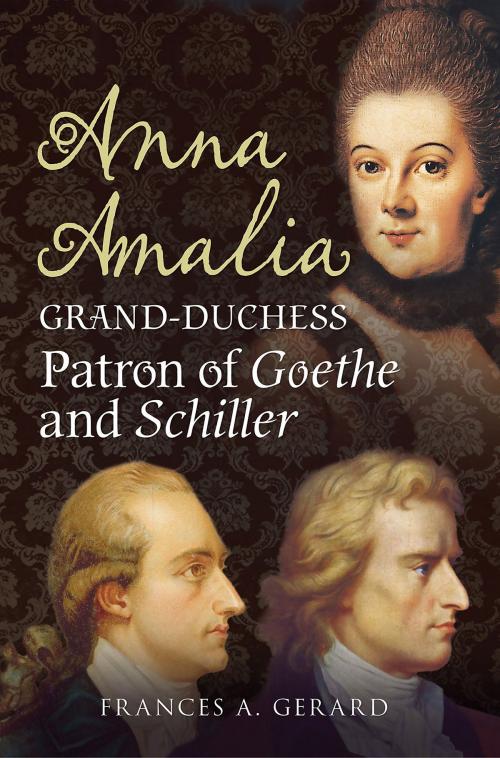Anna Amalia, Grand Duchess
Patron of Goethe and Schiller
Biography & Memoir, Royalty, Nonfiction, History, Germany, Historical| Author: | Frances A. Gerard, Alan Sutton, Fonthill Media | ISBN: | 1230001515770 |
| Publisher: | Fonthill Media | Publication: | January 21, 2017 |
| Imprint: | Language: | English |
| Author: | Frances A. Gerard, Alan Sutton, Fonthill Media |
| ISBN: | 1230001515770 |
| Publisher: | Fonthill Media |
| Publication: | January 21, 2017 |
| Imprint: | |
| Language: | English |
In 1756, Anna Amalia, the nineteen-year-old princess of the House of Brunswick was married to Constantine, the young duke of the minor duchy of Saxe-Weimar-Eisenach. She bore Constantine two sons, but only three years after their marriage he died, leaving the young and inexperienced girl as regent. Anna Amalia battled against court intrigues and financial pressures, but succeeded in holding the estates together for her eldest son, Karl August. Through times of famine and distress she succeeded in building a centre of culture and of excellence, encouraging men of letters and learning to her tiny court. In 1775 Wolfgang Goethe joined the circle at Weimar, brought about through his friendship with the young Karl August, Anna's son, recently become the reigning duke. Goethe soon entered into the dowager duchess's literary circle and through their combined efforts, Weimar became a beacon of culture and one of the leading centres of the sentimentalist movement that became renowned throughout Europe as a literary and artistic grouping that emerged in response to the crisis of Enlightenment rationalism. In Weimar it took the form of Sturm und Drang, [storm and stress] which was intimately associated Goethe and Schiller. While a student at Strasbourg, Goethe had made the acquaintance of Johann Gottfried von Herder, another of Anna Amalia's Weimar coterie, famous for his novel Die Leiden des jungen Werthers (1774); [The Sorrows of Young Werther], which epitomized the spirit of the movement, and which made him world famous, inspiring a host of imitators. Through the crisis of wars Anna's circle held together - even through Napoleon's unwelcome entrance to Weimar in 1806. Anna finally bowed to the world in the following year, after reigning supreme as Germany's cultural ambassadress for a period of more than thirty years.
In 1756, Anna Amalia, the nineteen-year-old princess of the House of Brunswick was married to Constantine, the young duke of the minor duchy of Saxe-Weimar-Eisenach. She bore Constantine two sons, but only three years after their marriage he died, leaving the young and inexperienced girl as regent. Anna Amalia battled against court intrigues and financial pressures, but succeeded in holding the estates together for her eldest son, Karl August. Through times of famine and distress she succeeded in building a centre of culture and of excellence, encouraging men of letters and learning to her tiny court. In 1775 Wolfgang Goethe joined the circle at Weimar, brought about through his friendship with the young Karl August, Anna's son, recently become the reigning duke. Goethe soon entered into the dowager duchess's literary circle and through their combined efforts, Weimar became a beacon of culture and one of the leading centres of the sentimentalist movement that became renowned throughout Europe as a literary and artistic grouping that emerged in response to the crisis of Enlightenment rationalism. In Weimar it took the form of Sturm und Drang, [storm and stress] which was intimately associated Goethe and Schiller. While a student at Strasbourg, Goethe had made the acquaintance of Johann Gottfried von Herder, another of Anna Amalia's Weimar coterie, famous for his novel Die Leiden des jungen Werthers (1774); [The Sorrows of Young Werther], which epitomized the spirit of the movement, and which made him world famous, inspiring a host of imitators. Through the crisis of wars Anna's circle held together - even through Napoleon's unwelcome entrance to Weimar in 1806. Anna finally bowed to the world in the following year, after reigning supreme as Germany's cultural ambassadress for a period of more than thirty years.















